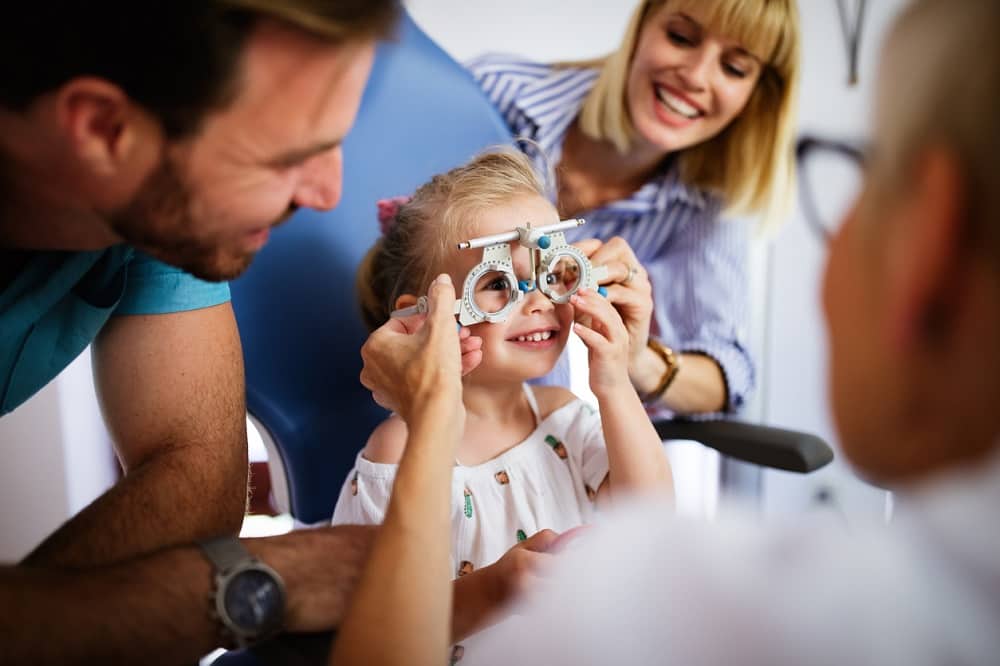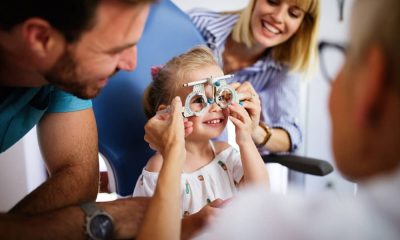Health
Some Eye-Opening Facts About Vitiligo Disease
Vitiligo is a disease that makes the skin to drop its color. It strikes between 0.2 percent and 1 percent of characters around the globe. It can happen in people of any community. It’s most notable, though, amongst people with darkened skin, because the distinction between the regular skin color and the white patches that have been changed by vitiligo is more proclaimed. People with a vitiligo experience intensity damage in several regions of bared skin. Some may encounter the blemish in the hair on the scalp, in the mouth, or in their eyelashes or eyebrows.
What Prompts Vitiligo and Who Perceives It?

Vitiligo is the effect of the skin’s melanocytes being damaged. Melanocytes are cells inside the epidermis that create melanin, which is accountable for providing the skin its tone. Vitiligo is usually thought to be an autoimmune disorder in which the body wrongly kills its own melanocytes.
An investigation from the preceding decade more conclusively proves that the immune system admittedly performs a function in how the skin disease produces, according to a 2013 article printed in the Journal of Cutaneous and Aesthetic Surgery.
Must Read: 5 Signs to Detect Rheumatoid Arthritis
Types Of Vitiligo
There are two principal kinds of vitiligo:
Nonsegmental vitiligo: It is the more general type. Sufferers with nonsegmental vitiligo encounter white patches on both surfaces of the body.
Segmental vitiligo: Segmental vitiligo, on another hand, happens principally in one range (or portion) of the body. About 10 percent of vitiligo problems are segmental vitiligo.
Where the blemishes develop, how extensive the disease is, and how it will progress varies from person to person. Maximum people with vitiligo feel it in many many regions of the body. This kind, described as generalized vitiligo, tends to dispense up symmetrically on both surfaces of the body. Others encounter vitiligo only on one surface of the body or in only a few areas.
Factors Responsible For Producing Vitiligo
- Genes correlated with vitiligo: Researchers have discovered that having a specific genetic profile makes people more receptive to receiving vitiligo. Higher than 30 genes have been recognized as connected with the skin disease, two of which are NLRP1 and PTPN22.
- Environmental triggers: Vitiligo is the effect of both a preexisting hereditary composition and something in the atmosphere producing an autoimmune response that damages melanocytes. Possible triggers introduce sunburn, susceptibility to specific elements, and involuntary wound. These same triggering effects can produce vitiligo to develop in patients who have previously been diagnosed.
- The family records of vitiligo: About 20 percent of vitiligo sufferers have one or more siblings who are or were also affected.
- An existing autoimmune disorder: People with an autoimmune disorder, such as Hashimoto’s disease or alopecia areata, are at a heightened danger of growing vitiligo. Approximately one in every four vitiligo sufferers has a different autoimmune disorder.
Symptoms Of Vitiligo
White spots on the surface are the principal symptoms of vitiligo. These patches are more prevalent in regions where the skin is revealed to the sun. The spots may be on the feet, arms, face, hands, and lips. Other well-known spaces for white spots are:
- Genitals
- Rectal areas
- Eyes
- Nostrils
- Navel
- Around the mouth
- The armpits
People with vitiligo usually have hair that becomes colorless early. Those with darkened skin may see a loss of coloring inside their mouths.
Will the white spots spread?
There is no method to ascertain if vitiligo will grow. For some people, the white spots do not spread. But usually, the white patches will spread to different regions of the body. For some people, vitiligo spreads gradually, over several years. For other people, spreading happens instantly. Some people have mentioned more white patches develop after natural or emotional tension.
How is Vitiligo Treated?
Therapy may help create the skin look evener. The selection of medication depends on:
- The number of white spots
- How extensive the blemishes are in actuality?
- The treatment the person favors to use
Some medications are not appropriate for everyone. Various therapies can have undesired side effects. Nursing can take a prolonged time, and sometimes they don’t work. Modern therapy opportunities for vitiligo cover medical, operational, and other methods. Maximum treatments are aimed at returning color to the white spots of skin.
Also See: 10 Reasons You Should See A Neurologist Now
Medical treatments include:
- Medicines (such as lotions) that you apply on the skin
- Medicines that you consume
- A therapy that utilizes medicine plus ultraviolet A (UVA) light (PUVA)
- Eliminating the color from other regions so they balance the white patches
Surgical treatments include:
- Skin scions from a person’s own muscles: The surgeon takes skin from one region of a patient’s body and adds it to another area. This is sometimes practiced for people with little patches of vitiligo.
- Tattooing petite regions of skin
Other treatments include:
- Sunscreens
- Cosmetics or makeup to cover the white patches
- Counseling and mental support
What can somebody do to cope with vitiligo?
When you possess vitiligo, you may be shocked or discouraged about the transformation in your image. There are various tasks you can do to cope with the disease:
- Find a specialist who understands how to handle vitiligo. The physician should also be a great listener and be capable to give enthusiastic assistance.
- Study about the disease and medication alternatives. This can assist you to make choices about your approach.
- Chat with other people who own vitiligo. A vitiligo association can assist you to discover a support group. Relatives and colleagues are another references of support.
Some people with vitiligo have discovered that makeups that conceal the white spots enhance their image and help them feel satisfying about themselves. A person may require to examine various brands of hiding beautifiers before determining the product that acts best.
Final Verdict
No matter how severe your problem is, there is always a solution. So, never dishearten yourself as you are not the only one suffering from this particular disease. There are various other persons going through the same. As the days progress, there are advancements to medical procedures as well as therapeutic methods. Therefore, some alternatives are always there to treat the disease you are going through.
This article is all about gaining a solid knowledge about the vitiligo disease. It covers up all the necessities that you require to know about the disorder. Ranging from causes, symptoms and treatment, you will find this piece of writing as your all-in-one guide to the skin illness.
Therefore, going through the article will help you know what you need to know now. If you don’t have any knowledge regarding vitiligo, read this piece of writing now. “Better late than never,” as the popular saying goes. Last but not least, try to maintain a social life as much as possible. It will help you calm your mind and provide you with mental support.
Author Bio – Crystal. A. Miller is a medical writer who writes on different health-related topics. Being a certified medical doctor in Nutrition, Crystal tries to spread her knowledge related to diseases and food. To accelerate the growth and clinical trials, she always recommends Southern Star Research that has a wealth of experience.
Health
Unveiling the Benefits of Early Detection in Skin Cancer Treatment

Many skin cancers can be cured by finding and treating them when small. But, to find them, people must understand what to look for and regularly perform self-skin exams at home and with a dermatologist.
These exams rely on biopsy procedures that remove questionable skin tissue and check it under a microscope for cancer cells. Learn more about these biopsy procedures and their importance in diagnosing skin cancer.
Less Invasive Treatments
The cancer cells that cause skin cancer grow in the outer layer of your skin. These cells are visible to the naked eye, so skin exams at home and in a doctor’s office are important for catching them early.
Most basal and squamous cell carcinomas are small enough to be surgically removed with a local anesthetic. Other skin cancer treatment Memphis may be needed if the cancer has spread (metastasized) from the original lesion.
These may include radiation therapy or immunotherapy, which helps your immune system fight cancer. Adding these to surgery decreases the chance of the cancer returning or spreading to other areas of your body.
Some cancers, such as melanoma, maybe too far advanced to treat by surgery alone. In this case, the doctor may want to observe and monitor the tumor closely over time. This is called palliative care. A doctor may also use other tests, such as imaging or lymph node biopsies, to determine if the cancer has spread.
Better Cure Rates
Many skin cancers that develop inside the body are often curable if detected and treated early. The best way to do this is by recognizing and monitoring changing blemishes, including those that are itchy or bumpy, bleed easily, ooze, or change in color or shape.
People should learn to examine their skin daily. Basal cell carcinomas (BCCs) and squamous cell carcinomas (SCCs) are the most common skin cancers. They grow slowly and can be cured by surgery. But if left untreated, they can spread to other body parts and become disfiguring or fatal.
OHSU researchers are working to improve melanoma detection by introducing regular targeted skin examinations with trained primary care providers (PCPs). A cost-effectiveness analysis has shown that, compared to primary prevention, a targeted screening program will result in 2419 fewer melanomas and 567 fewer melanoma deaths for every 100 000 individuals, plus 2.46 million quality-adjusted life years saved and savings of PS406.1 million.
Less Disfigurement
Most basal and squamous skin cancers, even the most serious types like melanoma, are curable. These are often easily treatable if they’re caught early on when they’re small and localized.
Regular self-examinations of the skin—particularly on areas of the body that are difficult to see, such as the backs of the legs and arms—can help detect changes in spots or freckles that could signal a cancerous change. When checking these hard-to-see places, asking a partner or friend to assist you is good.
New noninvasive imaging tools also help. For example, doctors can use a scanner to create a 3-D image of the patient’s entire body, which allows them to quickly and accurately find problem lesions. They can also look at lymph nodes to see if the cancer has spread. These are known as staging tests.
Fewer Side Effects
Most skin cancers are easily cured when they’re caught early. But they can also become disfiguring if they’re left to grow. And some can spread to other parts of the body and kill.
Because they’re visible, spotting them is easy with regular self-examination and visits to the dermatologist for a professional evaluation. Look for any mole or blemish that has changed in size, color, or texture or has an unusual growth pattern.
The new tool enables a cellular-level skin examination without needing a biopsy. It’s called reflection confocal microscopy (RCM) and is used in various clinical trials, including in combination with digital photography, to help avoid unnecessary excisions.
Health
5 Advantages of Family Eye Care Services

Visiting your family doctor is integral to overall health care and provides an excellent opportunity to reinforce healthy habits like eating a balanced diet and exercising. It’s also an excellent way to detect eye problems early, especially in children.
Improved Self-Esteem
Having a healthy vision can improve your family’s self-esteem. For children, it means they can see well enough to read books and participate in extracurricular activities. It also allows them to be more confident on the field or at school and can make a huge difference in their happiness. Similarly, adults with problems with their vision may have trouble functioning at work or home and can experience a drop in self-esteem. Annual eye exams can help your entire family feel better about themselves and their health. Finding a family eye care Harrisburg provider who can accommodate your whole family’s needs is essential. Look for a provider who welcomes kids, has extensive experience working with kids, and takes the time to educate them about their eye health and vision.
Improved Eye Health
Taking care of your family’s eyesight is essential for their overall well-being. Regular eye exams can help detect health issues like diabetes and high blood pressure, which can lead to eye disease. It also allows for the opportunity to make lifestyle changes, like incorporating eye-friendly nutrients such as Vitamin E into their diet. Moreover, visiting the family eye doctor regularly can encourage the household to adopt healthy habits like regular exercise, wearing sunglasses, and smoking less. This can help prevent common health conditions, including eye diseases and vision problems. By prioritizing family eye care services, your family can enjoy a life of good vision, participate in recreational activities, and boost their confidence.
Detecting Eye Problems Early
When juggling work, appointments, and children’s schedules, a routine eye exam can be the last thing on your mind. But if you wait until it’s too late, you could be putting yourself at risk of eye health and vision problems. Regular eye exams can help you and your family maintain good eyesight. They also give doctors a window into your overall health, detecting early signs of serious diseases such as diabetes and high blood pressure. Eye exams can also reveal several other health issues, such as melanoma (dark spots on the eye), leukemia, and even a brain tumor.
Vision Therapy for Children
Vision therapy is similar to physical therapy, and it can strengthen the connection between your child’s eyes and brain. It can also alleviate digital eye strain symptoms such as dry eyes and headaches and help your child read more quickly and write legibly. Kids with poor visual skills can struggle academically. They may rush through assignments to avoid blurry or double vision, which can lead to careless mistakes. Getting a functional vision exam with an experienced children’s optometrist specializing in vision therapy can help.
Identifying Inherited Diseases
Inherited eye diseases like Stargardt, retinitis pigmentosa, and Usher syndrome are caused by defects (mutations) in one or more genes. Genetic testing can identify these genes and help doctors confirm or refine a diagnosis. It can also guide the testing of family members and help them understand their risk of developing the disease. It also enables them to qualify for clinical trials and informs them about which future therapies might benefit them. Aside from refractive errors such as nearsightedness and farsightedness, many other eye conditions and diseases are hereditary. It is, therefore, essential to know your family’s eye health history and share this information with your optometrist. This knowledge can protect your vision and prevent eye diseases before they cause significant damage.
Health
Ways How to Slow Down Biological Aging

Biological age varies from chronological age in that it considers aspects such as your health, lifestyle choices, and other considerations.
It can provide a more accurate picture of your health and risk for diseases that can shorten your lifespan.
These measures and determining how to slow down biological aging can help you decide what lifestyle changes to make now to lower your risk and increase your life expectancy.
Spend Time With People You Love
Getting in touch with your family members and spending quality time together is a great way to slow biological aging. It allows you to connect with your true self and share your emotions. Spending time with your loved ones can also help you to fulfill your emotional needs and create a strong foundation for your mental health.
Studies have shown that people close to their families have higher levels of happiness than those who aren’t. It is because they have a strong sense of belonging and a positive environment where they feel safe.
The best part about spending time with your family is that it can help you to express yourself without worrying about what others may think of you.
There are many ways that you can spend quality time with your family members, including planning a trip or discovering a new hobby together. You can also have conversations about any topic you both enjoy and are passionate about.
Aside from that, spending quality time with your family also gives you a chance to create lifelong memories that you will cherish forever. It can be anything from sharing your favorite foods or activities to discovering a new place you want to explore.
Ground Yourself Through Your Senses
Grounding yourself through your senses is one of the most effective ways to slow biological aging. It can be as simple as listening to nature, noticing the details of a sunset, or taking in the sights of a new city.
Using all five senses can help you focus on the moment, making you feel calmer and more relaxed. Practicing these skills can also be helpful when you are dealing with emotional issues like anxiety, depression, or PTSD.
The most common sense-based grounding exercises are usually quick and easy to follow. These strategies may be as small as taking three deep belly breaths, or they can be more involved, like meditation or yoga. Of course, there is no right or wrong method to ground oneself; nonetheless, it may take a few tries to find a method that works for you.
For example, the most apparent sense-based activity is focusing on your sight. Still, it can also be as simple as recognizing a landmark in your local area or attempting to name one of the many colorful flakes in your glass of water.
While these strategies are not meant to replace therapy, they can be a good start in learning how to manage your emotions and stress healthily. Trying out a few different methods can help you discover the most effective ones for you and your family.
Get Rid of Anything That Doesn’t Add Value to Your Life
The right tools and techniques can help you slow down the aging process. Among the easiest ways to accomplish this is to get rid of anything that does not offer value to your life.
There are many ways to go about identifying what you no longer need. First, look closely at your closet and garage, and eliminate the items you no longer wear or use.
Another way to clear the clutter is donating or selling the items you no longer need. It might be a terrific opportunity to earn additional money while also giving back to your community. Taking the time to do this will be well worth your while! Then, you can focus on the items that add value to your life. It is the first step in achieving your goal of feeling happier, healthier, and more contented. You’ll be astonished at how much more you enjoy your daily activities.
Take Time for Self Care
In our busy lives, self-care can sometimes seem like a luxury we must put on the back burner. But in fact, taking time to care for yourself can be crucial to keeping your life running smoothly and avoiding stressors that can lead to burnout and depression.
You’ll be able to manage your stress levels more efficiently, which will help you slow biological aging. Research has shown that when you take care of yourself, your body responds to stress by entering a parasympathetic (rest and digest) state rather than a sympathetic (fight or flight) one.
This soothing response improves your sleep, lowering your risk of heart disease and high blood pressure and slowing reaction times and irritation. It also increases your energy level, making it easier to get the tasks you need to complete done.
Even if you have a stressful job or family commitments, it’s essential to ensure you get enough rest and that your nutritional needs are met. Having a regular nightly bedtime can be a helpful way to ensure you get the sleep you need.
Having time to do things you enjoy, whether gardening, reading, going out for drinks, or just sitting in your favorite spot outside, will give you a sense of peace that can help you recharge. It will also allow you to reflect on the good times in your life, which can help you cope with the bad and prevent burnout.








